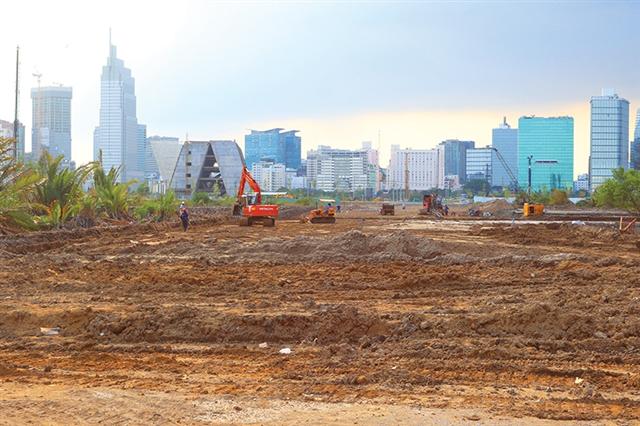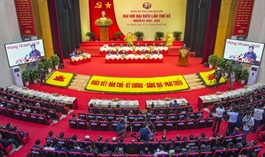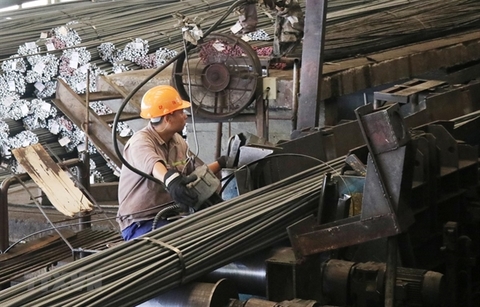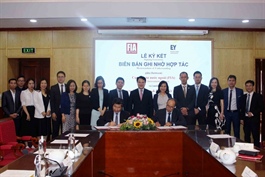Infrastructure development at the centre of PPP decree direction
Infrastructure development at the centre of PPP decree direction
Further clarifying the legal framework for infrastructure development via wider participation of private investors is expected to help the country attract more funding into the industry.

Infrastructure development at the centre of PPP decree direction. Photo: Le Toan
|
The Ministry of Planning and Investment is now compiling two decrees to guide the implementation of the Law on Public-Public Partnership Investment. They include a decree on detailing the law and another one on selecting investors.
The new Law on Public-Private Partnership Investment adopted by the National Assembly in June and will come into effect on January 1, 2021.
In fact, many investors’ expectations are high that the nation will further foster private investors for public-private partnerships (PPP) to support local infrastructure development. The law contains important improvements and implications to ensure cost-effective and predictable project implementations, and aims to attract more private and foreign investment by clarifying the existing legal framework.
The Vietnamese government hopes to show its commitment to domestic and foreign financiers and create a secure environment for them when participating in PPP projects.
This year, Vietnam has made significant efforts to revise its legal framework for infrastructure development since January. At that time, businesses were concerned with corresponding laws that they considered a limiting factor for Vietnam’s economic development and said that the state should come up with a comprehensive strategy on judicial reform to continue its infrastructure expansion.
Dr. Tran Tho Dat, member of the prime minister’s Economic Advisory Group, said that within ASEAN, countries like Indonesia, Thailand, and Malaysia are evolving their infrastructure faster than Vietnam, adding that, “If we do not catch up, the Vietnamese economy is likely to lag further behind.”
Although Vietnam has been a dynamic country with frequent legal changes, Dat remains concerned about the limitations of the nation’s infrastructure system. “Planning, especially in large cities, has not met the requirements regarding connection efficiency and quality. The transport system remains weak and cannot yet support the country’s development goals of industrialisation and modernisation,” he concluded.
According to the World Bank’s report “Vibrant Vietnam – Forging the Foundation of a High-Income Economy,” published in June, about 90 per cent of the nation’s residential infrastructure is invested in by the state. Meanwhile, private funding has remained low at just under 1 per cent of GDP during the past decade, with most of this being poured into the energy sector.
Vietnam has further prioritised infrastructure development and encouraged the private sector to rely on the regulations stated in Decree No.15/2015/ND-CP issued in February on investment in the form of PPP, which so far has been the only legal framework for private investments in public infrastructure.
Although Decree 15 specified procedures that authorities must follow when bidding on PPP projects and removed the limits of 30 per cent for government funding, the decree’s regulations have not yielded the expected results.
No project was bid on by more than one eligible or interested investor, although as the World Bank’s report stated that 18 PPP projects out of 53 were competitively bid on. The decree’s requirements have created burdens with crafting feasibility studies and undertaking competitive bidding, while most ministries and agencies have not been prepared for this.
As a result, the private sector has not participated heavily in infrastructure investment. The World Bank’s data also shows that, since 1990, only 116 PPP projects with a total value of $19.4 billion have been approved in Vietnam, equal to less than 10 per cent of total investment in infrastructure since then. Additionally, approximately 75 per cent of PPP schemes were implemented in the energy sector.
According to analysts, the country currently does not have enough capital or suitable solutions within its financial system to meet the investment needs for local infrastructure projects. Moreover, local banks so far limit outstanding loan increases as public infrastructure ventures require long-term capital supply and banks are not ready to lend to new private and small developers.
Thus, as neither state budget nor local banks could be the solution, the government has been required to find alternatives to finance public infrastructure developments. With the new law on PPP investment, it is hoped some groundwork will be carried out imminently.
|
Vietnam’s capital demand for infrastructure development According to previous estimates of the Ministry of Transport, the total capital needed for the country’s transport infrastructure has been equivalent to about $48 billion from 2016 through 2020. Besides this, road infrastructure and projects according to the National Power Development Plan VII also require total investment of approximately $148 billion until 2030, with this number likely to even increase further. The Asian Development Bank estimates that Vietnam will need an average of at least $16.7 billion a year between 2015 and 2025 to finance infrastructure development needs. Meanwhile, the World Bank even forecasts that Vietnam’s capital needs for infrastructure development may reach $25 billion per year, an amount much higher than the average level in the 2011-2015 period. |






















